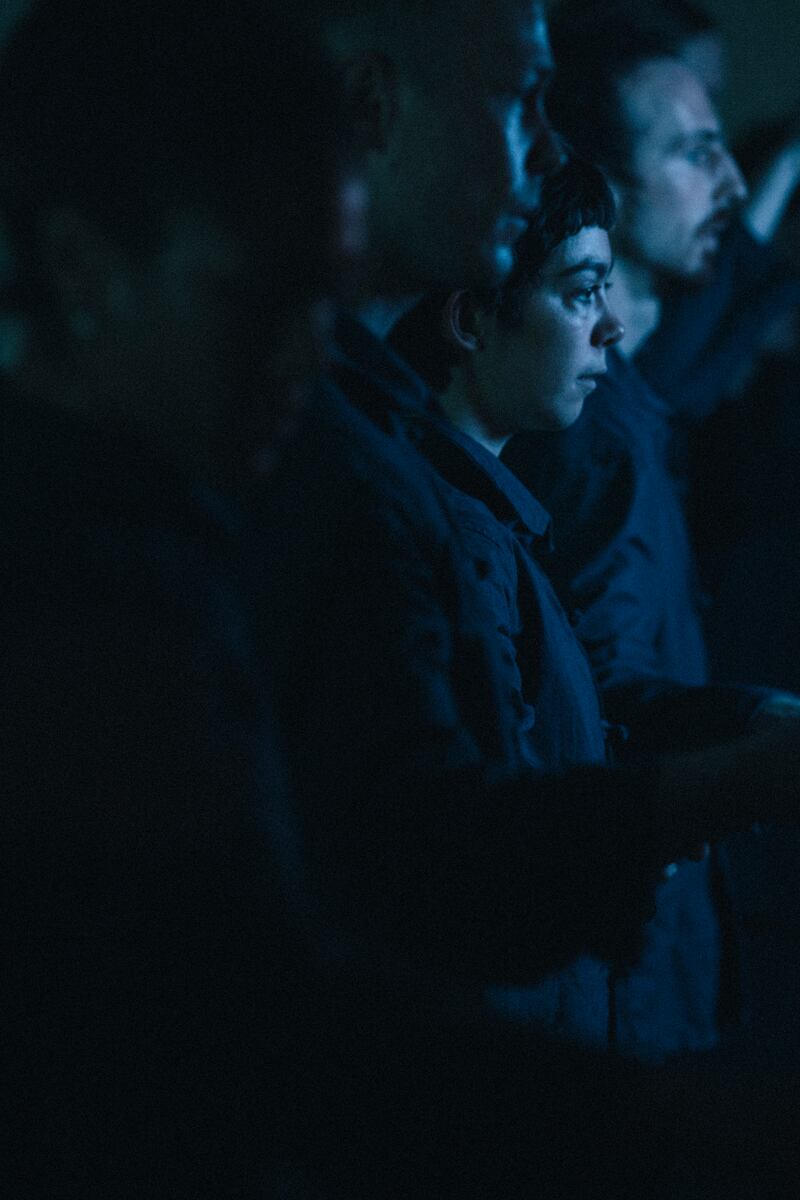A danced portrait of an avant-garde harpsichordist sounds like a hard sell, but Jan Martens’s solo, Elisabeth Gets Her Way, provoked both admiration and piqued curiosity from the audience at Belfast International Arts Festival. After raucous final curtain ovations and insightful post-performance questions, more than a few patrons were checking Spotify on their mobile phones for Polish harpsichordist Elisabeth Chojnacka (1939—2017).
Spotify will replay incredible audio, but Chojnacka’s attraction was also largely visual. Glamorous, her flamboyant virtuosity and her sense of razzmatazz lit up the staid subculture of avant-garde harpsichord music.
“I perform with my head, my hands, my body, and it is glorious!” she is quoted, and Martens interweaves his live performance with recorded interviews and documentary footage revealing costume changes mid-concert, use of theatre lights and her formidable work ethic, but utterly charming public persona.
Discovering her music when creating Any Attempt Will End In Crushed Bodies And Shattered Bones (performed in May at Dublin Dance Festival), Martens allows Chojnacka’s life and music to dictate the choreography, his moves embodying and magnifying the most delicate musical patterns of her fingers.
How your mini travel shampoo is costing your pocket and the planet - here’s an alternative
My smear test dilemma: How do I confess that this is my first one, at the age of 41?
The 50 best films of 2024 – the top 10 movies of the year
Paul Mescal on Saturday Night Live review: Gladiator II star skewers America’s bizarre views about Ireland
In the breathlessly fast Phrygian Tucket by Stephen Montague, where Martens’s movement flawlessly copies contrasting blocks of looping repetitions: large swooshing arpeggios are mirrored with generous windmilling arms, elsewhere short repeating musical motifs are embodied with stuttering hand movements. This recording alone is well worth a search on Spotify.
Later in silence Martens sits naked on the floor, searching for ways to produce various sonorities with his body, like dragging his heel to produce screeches. Simultaneously in the recording of “Profil Sonore” by Graciane Finzi Chojnacka is discovering new sounds on the harpsichord, as she hits the strings with rubber mallets and slaps her feet against the pedals.
Her restless curiosity inspired a whole repertoire of contemporary music and rediscovery of older works that embraced the spirit of the avant-garde. We only see her perform on screen towards the end, the video of her playing a work by Xenakis a dance in itself.
Earlier in the week, Oona Doherty returned to Belfast with her new dance Navy Blue. Her earliest productions were supported by the festival, but her star has risen so much, particularly in Europe, that there are 11 other co-producers.
Born during Covid and enforced isolation, Navy Blue is an open-palmed admission of artistic uncertainty. Doherty reflects on dance and its importance in the face of the existential threat of climate change and historical conflict. The 12 performers are dressed identically in industrial navy blue jackets and trousers, and for the first half of the hour-long dance perform various ballet sequences to sections of Rachmaninov’s 2nd Piano Concerto.
The music’s lush and restless romanticism sweeps the movement along, but it was also chosen because of it’s background, composed in a time of depression and artistic blockage. Helped by his therapist Dr Nicolai Dahl, Rachmaninov eventually completed the concerto and Doherty writes in the programme that her dancers “were the Nikolai Dahl to my Rachmaninov”.
The dancing is mostly in unison, but not so razor-sharp that individuality is suppressed. Suddenly a loud snap of sound like gunfire pierces the music and one dancer falls, as if shot. Over the next few minutes dancers are “shot” one by one and their prostrate bodies begin to leak out navy blood, a masterful illusion by video designer Nadir Bouassaria. The oozed blood soon engulfs the stage and become waves, hinting at flooding induced by climate change.

Rising and forming a long line at the front of the stage, the dancers begin to lip-sync to Doherty’s voice, its text a self-interrogating essay into the meaning of her dance in the face of world ills. Free of the duty of unison collective, the choreography loses some of its importance as attention shifts to a recorded monologue. She mentions tyrants and corrupt politicians, but Doherty places herself under most scrutiny. What are the values that she lives by? What use is her choreography?
Using the metaphor of Carl Sagan’s “little blue dot” — a term signifying the insignificance of Earth in the universe — she calls Navy Blue her own little blue dot and rips open its financial envelope, listing the line-by-line production costs, as if questioning their value.
However personal, Navy Blue poses universal questions about society, personal accountability, and art. Artistically brave, it’s honesty in exposing uncertainty only strengthens it’s overall message of the primacy of community.
Text was also central in John Scott’s Othello (maybe a dance) at Project Arts Centre, the choreographer’s second foray into Shakespeare. Scott’s ability to shape-shift and reinvent always keeps audiences guessing, and this work sees him placing technology centre stage. On a large screen centre stage Valda Setterfield appears as if on a Zoom call, and her role and power as Iago is magnified as we see the details changes in facial expressions as she manipulates Othello.
Characters are doubled up. Favour Odusola is a more self-confident version of Othello than the more vulnerable, self-doubting Mufutau Yusuf, while Magdalena Hylak and Conor Thomas Doherty play differing distinct versions of Desdemona.
It is clear from early on that racism is at the heart of this tragedy: “I hate the Moor” states Setterfield repeatedly. As the choreography focuses into the final Act V the issues of race and domestic violence are more pronounced. Underneath these dark themes the work has a lightness of execution and constantly excellent performances.






